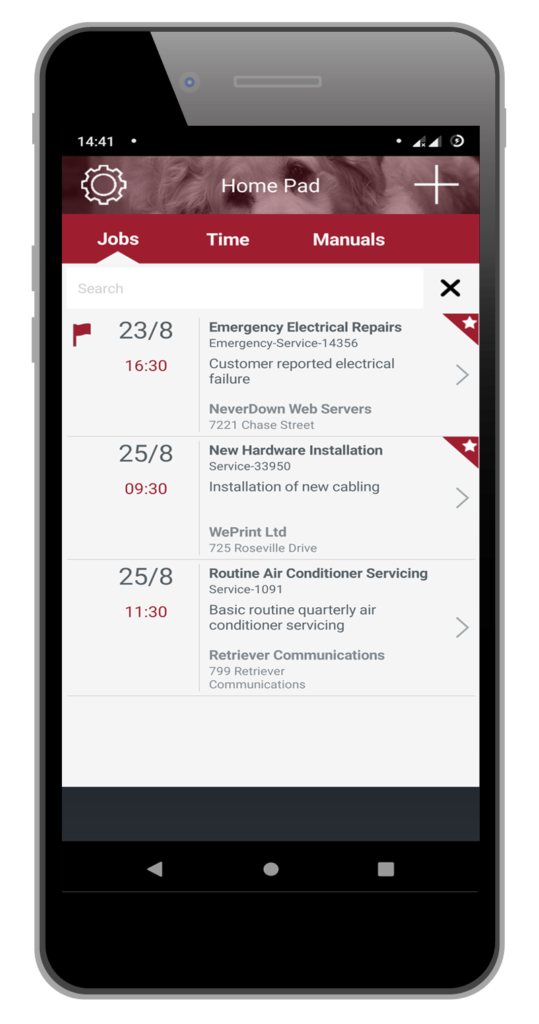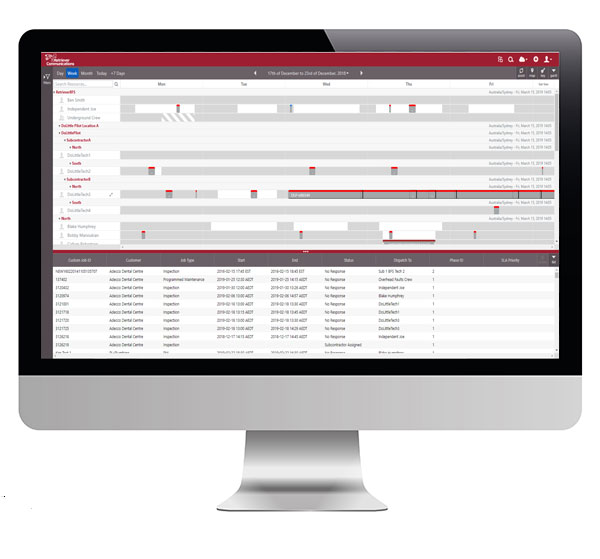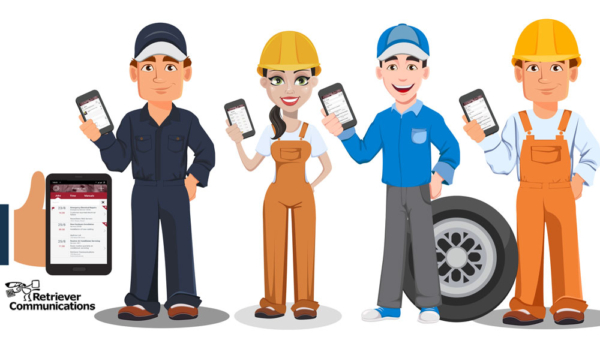What is Mobile Workforce Management?
The term Mobile Workforce Management (MWM) has been around for a while and there are a number of definitions out there including Wikipedia’s Workforce Management. The problem with most of these definitions is that they are very generic and originate from when mobile devices were relatively new. Here is our updated definition with some concrete examples:
Mobile Workforce Management (MWM) is how an organisation manages the challenges of having employees who are predominately mobile. They need mobile devices to access relevant data in the field and to communicate with the office. They need to be equipped with the tools to handle poor connectivity and safety hazards.
Mobile Workforce Management Software
Mobile Workforce Management Software is an essential tool for modern organisations so that they can deal with the challenges of managing a mobile workforce. MWM software consists of mobile applications for the field workers and web-based applications for back-office scheduling and reporting.
Different job types and workflows
Mobile Workforces perform a number of different types of work like planned maintenance, inspections or repair/servicing work. The mobile workforce software applications need to support different workflows for these different types of work. The field worker needs to be presented with the correct workflow for doing that particular type of work in the most efficient way.

Reliable and works in poor coverage
Mobile Workforce Software needs to be as reliable as the rest of the tools in the field worker’s toolbox. It can’t lose data and has to be able to work in areas with poor or no mobile data coverage. For these reasons, the applications can’t be web-based, the mobile applications need to be native.
Mobile Workforce Scheduling Software
Mobile Workforce Scheduling Software is accessed through a web browser. It allows office-based users to view and control every aspect of managing a mobile workforce day-to-day. The Scheduling Software needs to provide real-time visibility of how work is progressing. Other important factors like compliance levels, and field worker availability also needs to be visible.
Real-time view
The scheduling software needs to give people like supervisors and schedulers a real-time view of what is happening in the field. They need to be able to easily identify problems like late or incomplete work so that they can be actioned.

Subcontractor Support
Many industries have mobile workforces that are made up of subcontractors so the software needs to cater for these people. Not only does the organisation need visibility of their subcontractors but so do the subcontractor companies themselves. Scheduling software needs to enable both so that they can schedule and track work from start to finish.
Mobile Workforce Automation
Mobile Workforce Automation is not about replacing your workforce with robots. Rather it is about automating the tasks that the mobile workforce performs. This allows the workforce to be more productive and focus on the important and highly skilled tasks.
Typically, the first step in automating is around the communication and data transfer between the mobile worker and the office. This automation allows the worker to maximise their time in the field because they don’t need to come into the office anymore. It also eliminates the double entry of data and associated errors.
Devices for Mobile Workforces
Choosing the right device or device(s) for your mobile workforce is not easy. There are many trade-offs like screen size, portability, battery life and durability. It is important to careful review the conditions that your workforce will be using these devices in. Here are some good questions to ask the workers:
- Are you going to be using it outside in the sun?
- Are you able to charge their device during the day?
- Do you need to wear gloves?
- Do you need to use other tools at the same time?
- Do you need to see diagrams?
The devices options include the following:
- Tablets (e.g. iPad, Surface Pro)
- Smartphones (e.g. iPhone, Samsung Galaxy)
- Ruggedised devices (e.g. Honeywell, Zebra)
- Mixed/Augmented Reality headsets (e.g. Microsoft HoloLens)
- Wearables/Smartwatches (e.g. Apple Watch)
In some cases, workers will require multiple devices to assist them throughout their day to carry out different activities.
Mobile Workforce Management in Australia
MWM in Australia has some particular characteristics that relate to the weather conditions and demographics of the workforces. The sun, heat and remoteness experienced in many parts of Australia make it challenging. The MWM software and hardware used needs to be built to withstand these conditions.
Mobile device screens need to have good contrast to be seen in the bright sunlight. Users shouldn’t be required to put their device on maximise brightness to be able to see the screen outdoors. If they do then it is going to drain the battery pretty quickly and they are not going to be happy.
Mobile applications need to be able to work offline as mobile coverage can’t be assumed. This is especially the case in remote areas but even in the larger cities like Sydney, mobile coverage can patchy at the best times. Using web-based applications just doesn’t cut it in most cases. You need something native.
Mobile Workforces in certain industries in Australia are dominated by males over 40 with often literacy issues. These workers also haven’t grown up using Smartphones so can sometimes be slow to adopt new technologies. For these reasons, it is imperative that the mobile applications are easy to use and they match the workflow that the users follow.
The Future of Mobile Workforce Management
The future of Mobile Workforce Management is going to be heavily impacted by Technology. As Mixed/Augmented Reality (AR) headsets become smaller and more adapted to industrial conditions, they will play a large part in the next 20 years. Most people can see the potential of being able to use mobile devices without having to use our hands.
In the future, AR headsets will be no larger than ordinary glasses. Combined with wearables, it is going to make technology seamlessly integrated with the field worker. They will have access to data when they need it, without having to pull out their mobile device from their pocket.

Mobile Workforce Management is closely related to Work Order Management and Field Service Management.
